

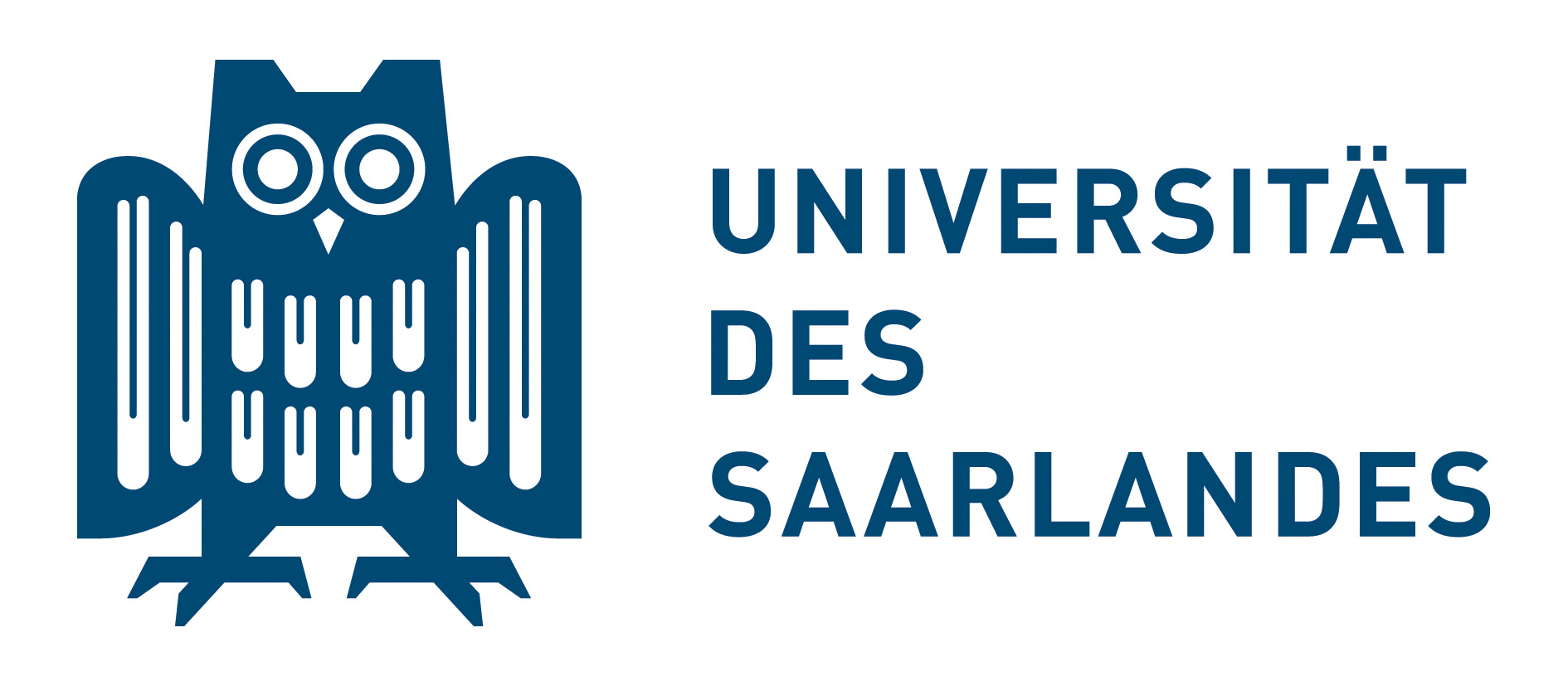
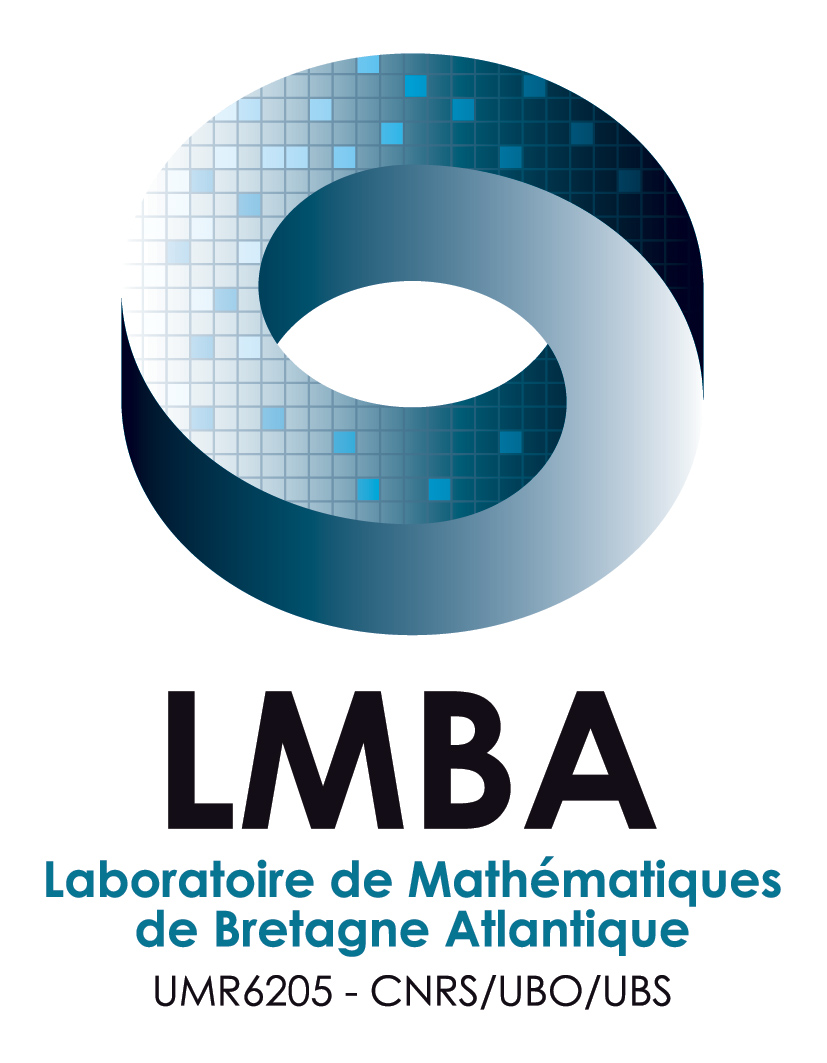

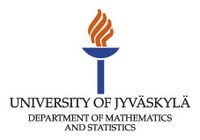
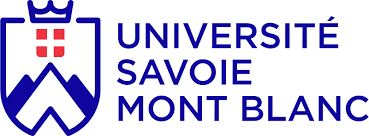
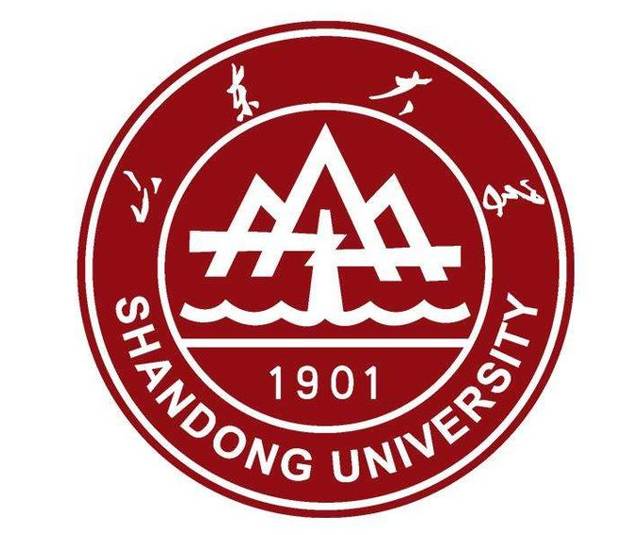
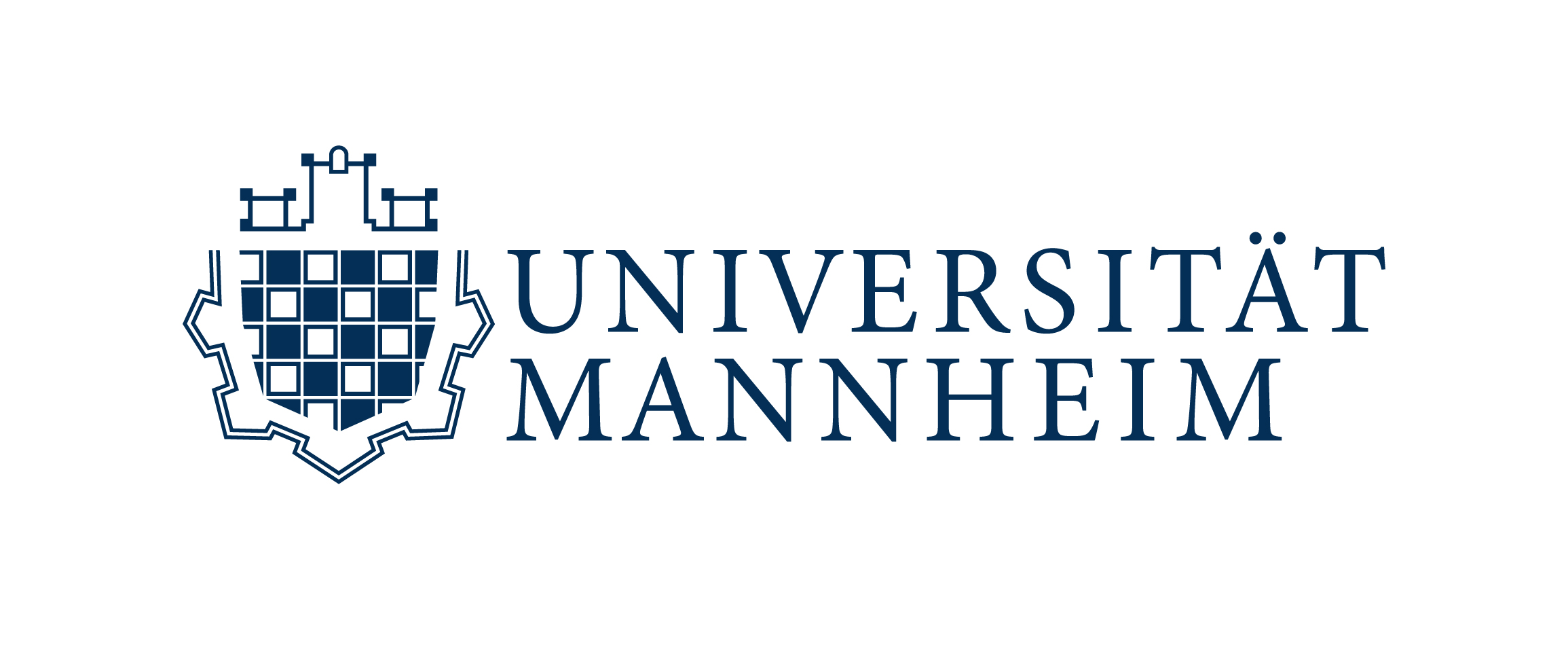
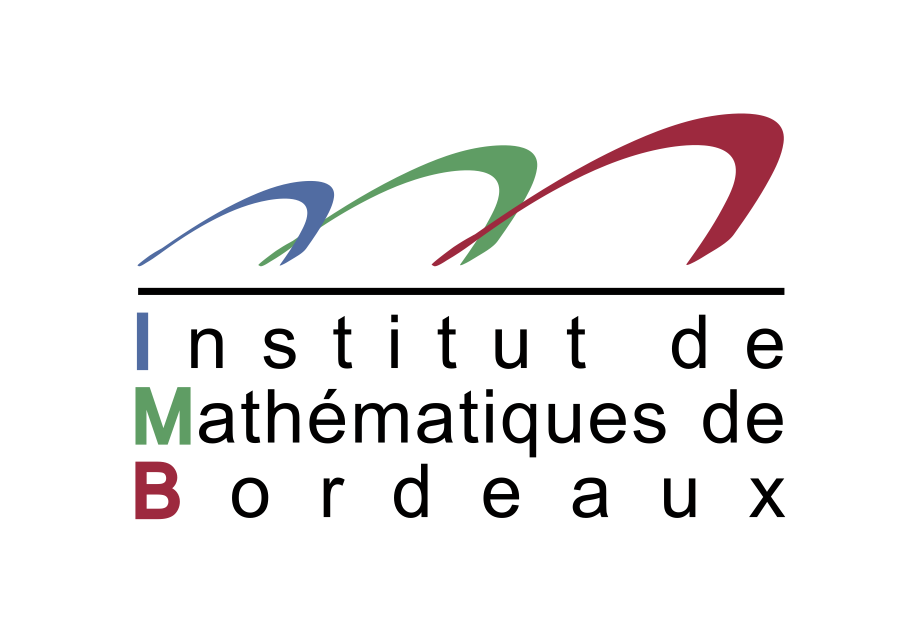
International Seminar on SDEs and Related Topics
Schedule 2022 Autumn
Oct 28, 2022 @ 12:30 UTC (3:30pm Helsinki), one hour later than usual!
David Nualart Poster:(Kansas University):
Abstract: In this talk we will present some recent results on first and second order fluctuations of
a class of additive functionals of a fractional Brownian motion. Two different behaviors arise depending
of the value of the Hurst parameter H. When the Hurst parameter is larger or equal than 1/3, the limit in
distribution turns out to be an independent Brownian motion subordinated to the local time. When H is less than 1/3, the limit
is a constant multiple of the derivative of the local time.
Nov 11, 2022 @ 12:30 UTC (3:30pm Helsinki), one hour later than usual!
Yaozhong Hu Poster:(University of Alberta, Canada)
Abstract: This talk wil be concerned with the existence and uniqueness of a strong solution to the one-dimensional stochastic wave equation
assuming , where
is a mean zero
Gaussian noise which is white in time and fractional in space
with Hurst parameter
.
The idea is to decompose the simple one-dimensional Green kernel into some more complicated ones which make the thing work
This talk is based on joint work with Shuhui Liu and Xiong Wang.
Nov 25, 2022
Ying Jiao Poster:(Université Claude Bernard Lyon 1, France)
Abstract: As the world is facing global climate changes, the Intergovernmental Panel on Climate Change (IPCC) has set the idealized carbon-neutral
scenario around 2050. In the meantime, many carbon reduction scenarios, known as Shared Socioeconomic Pathways (SSPs) have been
proposed in the literature. We aim to investigates the impact of transition risk on a firm’s low-carbon production. On the one hand, we consider a firm that
searches to optimize its emission level under the double objectives of maximizing its production profit and respecting the emission mitigation scenarios.
Solving the penalized optimization problem provides the optimal emission according to a given SSPs benchmark. On the other hand, such transitions affect the
firm’s credit risk. We model the default time by using the structural default approach and are particularly concerned with how the adopted strategies following
different SSPs scenarios may influence the firm’s default probability. Finally we discuss possible extensions of the model to a large portfolio of climate concerned
firms and propose numerical methods to compute the cumulative losses.
This is joint work with Florian Bourgey and Emmanuel Gobet.
Dec 09, 2022
Yuri Kabanov Poster:(University of Franche-Comté, Besançon, France)
Abstract: In the classical collective risk theory it is usually assumed that the capital reserve of a company is placed in a bank account paying zero interest. In the recent three decades the theory was extended to cover a more realistic situation where the reserve is invested, fully or partially, in a risky asset (e.g., in a portfolio evolving as a market index). This natural generalization generates a huge variety of new ruin problems which can be considered as the exit problem for a semimartingale Ornstein-Uhlenbeck process. Roughly speaking, each “classical” ruin problem, e.g., a version of the Cramer-Lundberg model (for the non-life insurance, for the annuity payments etc.) can be combined with a model of price of the risky security (geometric Brownian motion, geometric Lévy process, various models with stochastic volatilities, etc.). In the talk we present new asymptotic results for the ruin probabilities, in particular, for the Sparre Andersen type models with risky investments having the geometric Lévy dynamics and for Cramér-Lundberg type models with investments in a risky asset with a regime switching price.
Schedule 2023 Spring
Jan 13, 2023
Terry Lyons Poster:(University of Oxford, United Kingdom)
Abstract: We will survey the growing contribution of rough path based ideas, such as the signature of a path, to the understanding real world streamed data.
A more comprehensive account can be found at www.DataSig.ac.uk/papers
Jan 27, 2023
Jean-François Chassagneux Poster:(Université Paris Cité, France)
Abstract: We introduce a class of 'weak hedging problems’ which contains as special examples the quantile hedging problem (Föllmer & Leukert 1999) and PnL (Profit and Loss) matching problem (introduced in Bouchard & Vu 2012). We show that they can generally be rewritten as a kind of Monge transport problem. Using this observation, we introduce a Kantorovich version of the problem and, in some cases, we are able to prove a dual formulation. This allows us to design numerical methods based on SGD (stochastic gradient descent} algorithms to compute the weak hedging price.
Feb 10, 2023
Martin Hairer Poster:(EPFL, Switzerland and Imperial College London, United Kingdom)
Abstract: We report on recent progress on the problem of building a stochastic process that admits the hypothetical Yang-Mills measure as its invariant measure. One interesting feature of our construction is that it preserves gauge-covariance in the limit even though it is broken by our UV regularisation. This is based on joint work with Ajay Chandra, Ilya Chevyrev, and Hao Shen.
Feb 24, 2023
Rainer Buckdahn Poster:(Universite de Bretagne Occidentale, France)
Abstract: The talk is devoted to the study of Pontryagin's stochastic maximum principle for a mean-field optimal control problem under Peng's sublinear G-expectation. The dynamics of the controlled state process is given by a SDE driven by a G-Brownian motion, whose coefficients depend on the control, the controlled state process but also on its law under the G-expectation. Also the associated cost functional is of mean-field type. Under the assumption of a convex control state space we study Pontryagin's stochastic maximum principle, which gives a necessary optimality condition for the control process. Under additional convexity assumptions on the Hamiltonian it is shown that this necessary condition is also a sufficient one. The main difficulty which we had to overcome in our work consists in the differentiation of the G-expectation of parametrised random variables. As particularly delicate turns out to handle the G-expectation of a function of the controlled state process inside the running cost of the cost functional. For this we had to study a measurable selection theorem for set-valued functions whose values are subsets of the representing set of probability measures for the G-expectation. The talk is based on a recent joint work with Juan Li and Bowen He (Shandong University, Weihai, China).
Mar 10, 2023
Christa Cuchiero Poster:(University of Vienna, Austria)
Abstract: A plethora of stochastic models used in diverse areas, like mathematical finance, population genetics or physics, stems from the class of affine and polynomial processes. The history of these processes is on the one hand closely connected with the important concept of tractability, that is a substantial reduction of computational efforts due to special structural features, and on the other hand with a unifying framework for a large number of probabilistic models. One early instance in the literature where this unifying affine and polynomial point of view can be applied is Lévy's stochastic area formula. Starting from this example, we present a guided tour through the main properties and results as well as classical and recent applications, which culminates in the surprising insight that infinite dimensional affine and polynomial processes are actually close to generic stochastic processes.
Mar 24, 2023
Antoine Lejay Poster:(Université de Lorraine, France)
Abstract: The skew Brownian motion (SBM) is a useful process to deal with diffusion
in media presenting some interface. Actually, it behaves like a Brownian
motion away from 0. When reaching 0, its behavior is ruled by a single
parameter θ ∈ [-1,1] which affects the tendency of the particle to go
upward or downward. When θ =±1, the SBM is a reflected Brownian motion
while for θ = 0, the SBM is a Brownian motion.
In this talk, we discuss the main properties of the Maximum
Likelihood Estimator (MLE), which is consistent and asymptotically mixed
normal with a non standard rate of 1/4. In particular, we study its
behavior with respect to the value of the true parameter θ and we give an
infinite series expansion of the MLE thanks to a recent asymptotic
inverse function theorem.
From joint works with E. Mordecki, S. Torres, and S. Mazzonetto.
Mar 31, 2023 11:30 UTC European daylight saving times have started
Andreas Neuenkirch Poster:(University on Mannheim, Germany)
Abstract: The CIR process is the prototype stochastic differential equation (SDE) for the class of square root diffusions. These equations have widespread applications, in particular in finance, biology and chemistry. Moreover, since the diffusion coefficient contains a square root and is not Lipschitz continuous, the CIR process is also the prototype example for an SDE whose coefficients do not satisfy the so-called standard assumptions for numerical analysis. Due to these reasons, the approximation of the CIR process has attracted a lot of attention in the last 20 years. In this talk, I will give a state-of-the-art summary and will present some of the latest developments for the strong approximation of the CIR process.
Apr 14, 2023
Konstantinos Dareiotis Poster:(University of Leeds, United Kingdom)
Abstract: In this talk, we consider differential equations perturbed by multiplicative fractional Brownian noise.
Depending on the value of the Hurst parameter H, the resulting equation is pathwise viewed as an ordinary ( H>1),
Young ( H ∈ (1/2, 1)) or rough (H ∈ (1/3, 1/2)) differential equation. In all three regimes we show regularisation
by noise phenomena by proving the strongest kind of well-posedness for equations with irregular drifts: strong existence and
path-by-path uniqueness. In the Young and smooth regime H>1/2 the condition on the drift coefficient is optimal in the sense that
it agrees with the one known for the additive case. In the rough regime H ∈ (1/3,1/2) we assume positive but arbitrarily small
drift regularity for strong well-posedness, while for distributional drift we obtain weak existence.
This is a joint work with Máté Gerencsér.
Apr 21, 2023
René Schilling Poster:(Technische Universität Dresden, Germany)
Abstract: We discuss a proof of Liouville's theorem (all bounded harmonic functions are constant) for a class of Fourier multiplier
operators; this class includes Lévy-operators. We also show extensions where the harmonic functions are allowed to grow.
This is joint work with D. Berger (TU Dresden) und E. Shargorodsky (King's College, London).
May 05, 2023
Máté Gerencsér Poster:(TU Wien, Austria)
Abstract: We consider integrals of expressions of the form f(Xt ), where X is a stochastic process, and f is only a distribution. We overview some recent results on defining such integrals and discuss a variety of their applications in regularisation by noise for stochastic differential equations such as existence, uniqueness, stability, regularity, and approximation properties.
May 19, 2023
Christoph Reisinger Poster:(University of Oxford, United Kingdom)
Abstract: Fully coupled McKean–Vlasov forward-backward stochastic differential equations (MV-FBSDEs) arise naturally from large
population optimization problems. Judging the quality of given numerical solutions for MV-FBSDEs, which usually require Picard iterations
and approximations of nested conditional expectations, is typically difficult. In this talk, we propose an a posteriori error estimator to quantify
the L2-approximation error of an arbitrarily generated approximation on a time grid. We establish that the error estimator is
equivalent to the global approximation error between the given numerical solution and the solution of a forward Euler discretized MV-FBSDE.
We further demonstrate that, for sufficiently fine time grids, the accuracy of numerical solutions for solving the continuous MV-FBSDE can also
be measured by the error estimator. The error estimates justify the use of residual-based algorithms for solving MV-FBSDEs. Numerical
experiments for MV-FBSDEs arising from mean field control and games confirm the effectiveness and practical applicability of the error estimator.
Schedule 2022 Autumn
Oct 28, 2022 @ 12:30 UTC (3:30pm Helsinki), one hour later than usual!
David Nualart Poster:(Kansas University):
Abstract: In this talk we will present some recent results on first and second order fluctuations of
a class of additive functionals of a fractional Brownian motion. Two different behaviors arise depending
of the value of the Hurst parameter H. When the Hurst parameter is larger or equal than 1/3, the limit in
distribution turns out to be an independent Brownian motion subordinated to the local time. When H is less than 1/3, the limit
is a constant multiple of the derivative of the local time.
Nov 11, 2022 @ 12:30 UTC (3:30pm Helsinki), one hour later than usual!
Yaozhong Hu Poster:(University of Alberta, Canada)
Abstract: This talk wil be concerned with the existence and uniqueness of a strong solution to the one-dimensional stochastic wave equation
assuming , where
is a mean zero
Gaussian noise which is white in time and fractional in space
with Hurst parameter
.
The idea is to decompose the simple one-dimensional Green kernel into some more complicated ones which make the thing work
This talk is based on joint work with Shuhui Liu and Xiong Wang.
Nov 25, 2022
Ying Jiao Poster:(Université Claude Bernard Lyon 1, France)
Abstract: As the world is facing global climate changes, the Intergovernmental Panel on Climate Change (IPCC) has set the idealized carbon-neutral
scenario around 2050. In the meantime, many carbon reduction scenarios, known as Shared Socioeconomic Pathways (SSPs) have been
proposed in the literature. We aim to investigates the impact of transition risk on a firm’s low-carbon production. On the one hand, we consider a firm that
searches to optimize its emission level under the double objectives of maximizing its production profit and respecting the emission mitigation scenarios.
Solving the penalized optimization problem provides the optimal emission according to a given SSPs benchmark. On the other hand, such transitions affect the
firm’s credit risk. We model the default time by using the structural default approach and are particularly concerned with how the adopted strategies following
different SSPs scenarios may influence the firm’s default probability. Finally we discuss possible extensions of the model to a large portfolio of climate concerned
firms and propose numerical methods to compute the cumulative losses.
This is joint work with Florian Bourgey and Emmanuel Gobet.
Dec 09, 2022
Yuri Kabanov Poster:(University of Franche-Comté, Besançon, France)
Abstract: In the classical collective risk theory it is usually assumed that the capital reserve of a company is placed in a bank account paying zero interest. In the recent three decades the theory was extended to cover a more realistic situation where the reserve is invested, fully or partially, in a risky asset (e.g., in a portfolio evolving as a market index). This natural generalization generates a huge variety of new ruin problems which can be considered as the exit problem for a semimartingale Ornstein-Uhlenbeck process. Roughly speaking, each “classical” ruin problem, e.g., a version of the Cramer-Lundberg model (for the non-life insurance, for the annuity payments etc.) can be combined with a model of price of the risky security (geometric Brownian motion, geometric Lévy process, various models with stochastic volatilities, etc.). In the talk we present new asymptotic results for the ruin probabilities, in particular, for the Sparre Andersen type models with risky investments having the geometric Lévy dynamics and for Cramér-Lundberg type models with investments in a risky asset with a regime switching price.